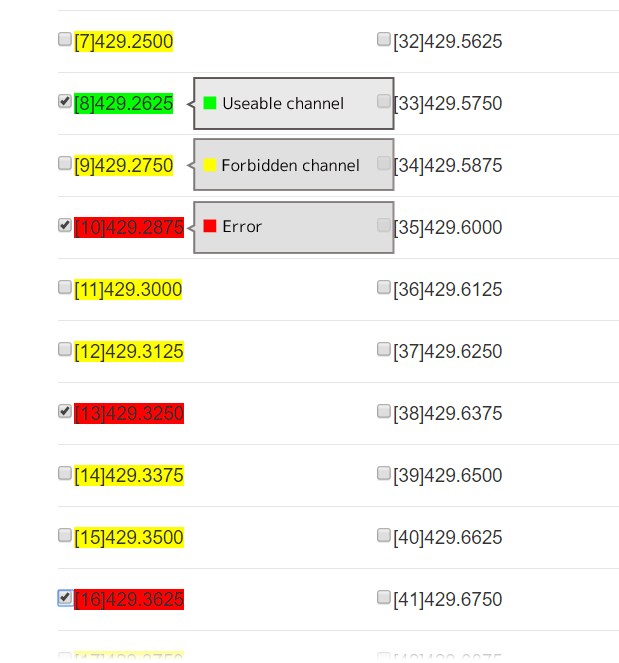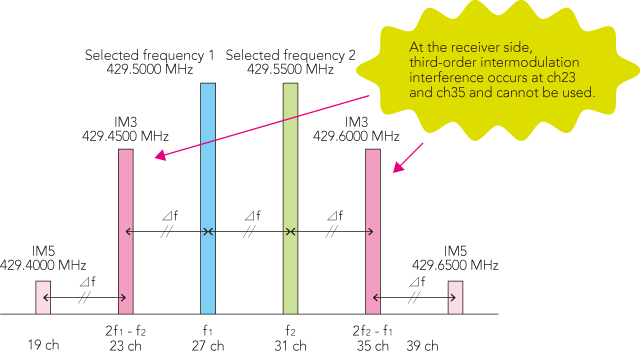Creating a channel plan in order to avoid third-order intermodulation interference and the near-far problem tool
By using this tool it is possible to create a channel plan taking into account the third order intermodulation interference and the near far problem
Start channel
End channel
Frequency MHz
Channel span kHz
Disable adjacent channel selection
How to use this tool to create a channel plan in order to avoid third-order intermodulation interference and the near-far problem.
In a small area where multiple channels are used, the third-order intermodulation interference and the near-far problem needs to be considered. By using this tool and selecting the band and channel, a channel plan that takes this into account can be created.

In the above diagram, we can select channels 8, 10 and 13. If we also select channel 16, however the tool will report channels 10, 13 and 16 selected as being in error (highlighted in red). If creating more channels, it is neccessary to avoid selecting the forbidden channels (highlighted in yellow) and instead select the channels that are not highlighted.
For example, channels 1-70 in the 434 MHz band, contains 70 channels. You cannot use all of these channels together.
Third order intermodulation
When using multiple channels in the same area, the distortion caused by the nonlinearity in the receiver allows waves to combine to form their sum and difference products. This produces the intermodulation. Within the same frequency band, out of the 3rd (IM3), 5th (IM5) and 7th (IM7) products etc. attention need to be paid to the 3rd (IM3) product.

Near-Far problem
When receiving a distant signal, a nearby transmitter in the same area communicating on a similar frequency can prevent the reception of the distant signal. Therefore it is necessary to use another frequency or move further away from the interfering transmitter.